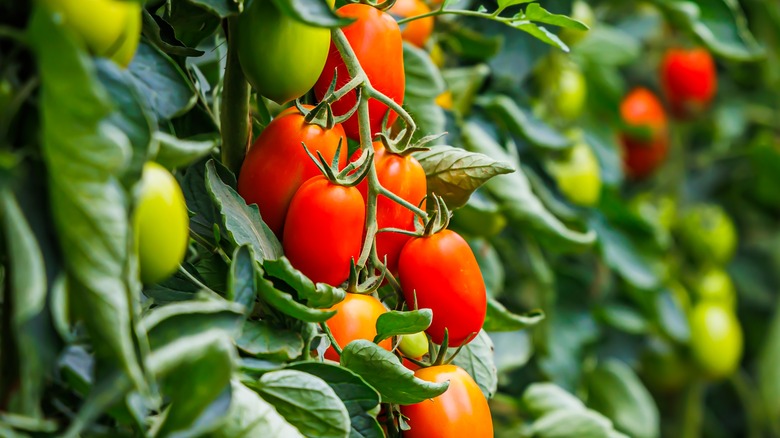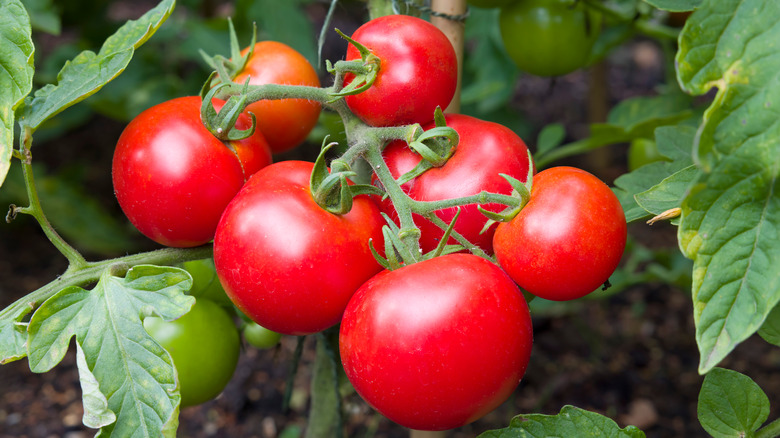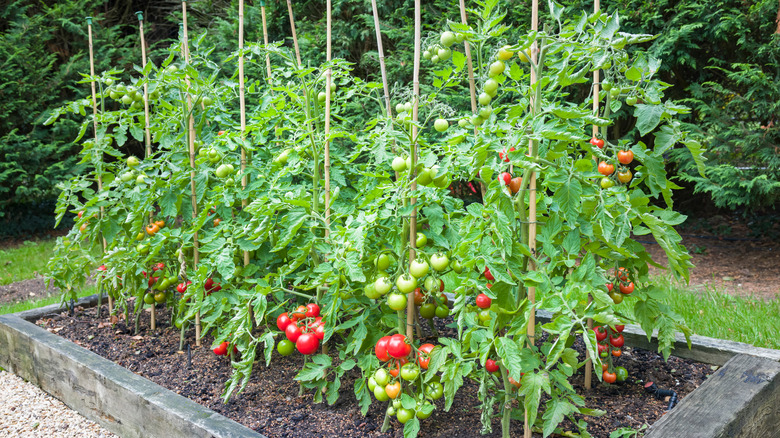Determinate And Indeterminate Tomatoes: What's The Difference?
Varieties of tomatoes are available in two main types of growth habits: determinate and indeterminate. The classification boils down to several factors unique to each kind of plant. While the term "growth habit" sounds like an optional feature or undesirable action you might want to break — like sitting on the floor eating ice cream at midnight (But we don't judge! You do you.) — this term actually refers to the way the plant grows. In this case, some tomato varieties grow as bushes, and others grow as vines. The growth habit should be listed on the plant tag or seed package, so you should always know what you're getting.
While the vast majority of tomatoes fall solidly in one category or the other, there are also some semi-determinate options. These cultivars are too viny to be bushes but too bushy to be vines. With over 10,000 varieties of tomatoes, it makes sense that every single option cannot be absolutely one growth type or the other. Since determinate tomatoes have particular qualifications, it is generally accepted that even semi-determinates are actually indeterminate varieties that grow shorter vines. But now that we are all thoroughly confused, let's clarify when to choose each type of tomato.
When to select indeterminate tomato varieties
Indeterminate tomato varieties grow long vines that sometimes have to be pruned; they require a sturdy trellis because those vines grow quickly! Some of the most popular indeterminate tomato varieties include the Sweet 100 cherry tomato and the Big Beef beefsteak tomato.
While trying to keep up with trellising and pruning indeterminate varieties can be a bit of work, there is a big payoff. These varieties grow as long as conditions are favorable. If you live in a southern region, you can plant indeterminate types after the last chance of frost and enjoy fresh tomatoes for as long as it is warm enough for them to set fruit. In some areas, that is six or seven months of fresh produce from one plant. Of course, the further north you are, the shorter the growing season. Thus, select indeterminate varieties if you want a steady harvest of fresh, juicy tomatoes.
When you should grow determinate tomatoes
Determinate varieties are perfect for people who can their own tomato sauce, salsa, or other homemade, tomato-based food for preservation. These cultivars get this classification because they grow to a predetermined size and produce a set amount of fruit, which varies by variety. All the tomatoes on these plants mature within a two- to four-week timeframe; then, the plant is finished producing for the season. That's what makes them great for canning — you get a bumper crop in a short time frame. Determinate tomato plants do not require pruning, and since they don't get long vines, they are easier to support with a simple cage or stake. Tomatoes grown specifically for containers, like the Better Bush variety, are determinate plants.
Most gardeners like to grow a mixture of indeterminate and determinate varieties. Or, if you're looking for something that stays relatively compact but produces all season, consider a semi-determinate option. Even if you are short on space, a combination of a few indeterminate and determinant varieties should provide you with enough fresh tomatoes to enjoy throughout the summer season.


